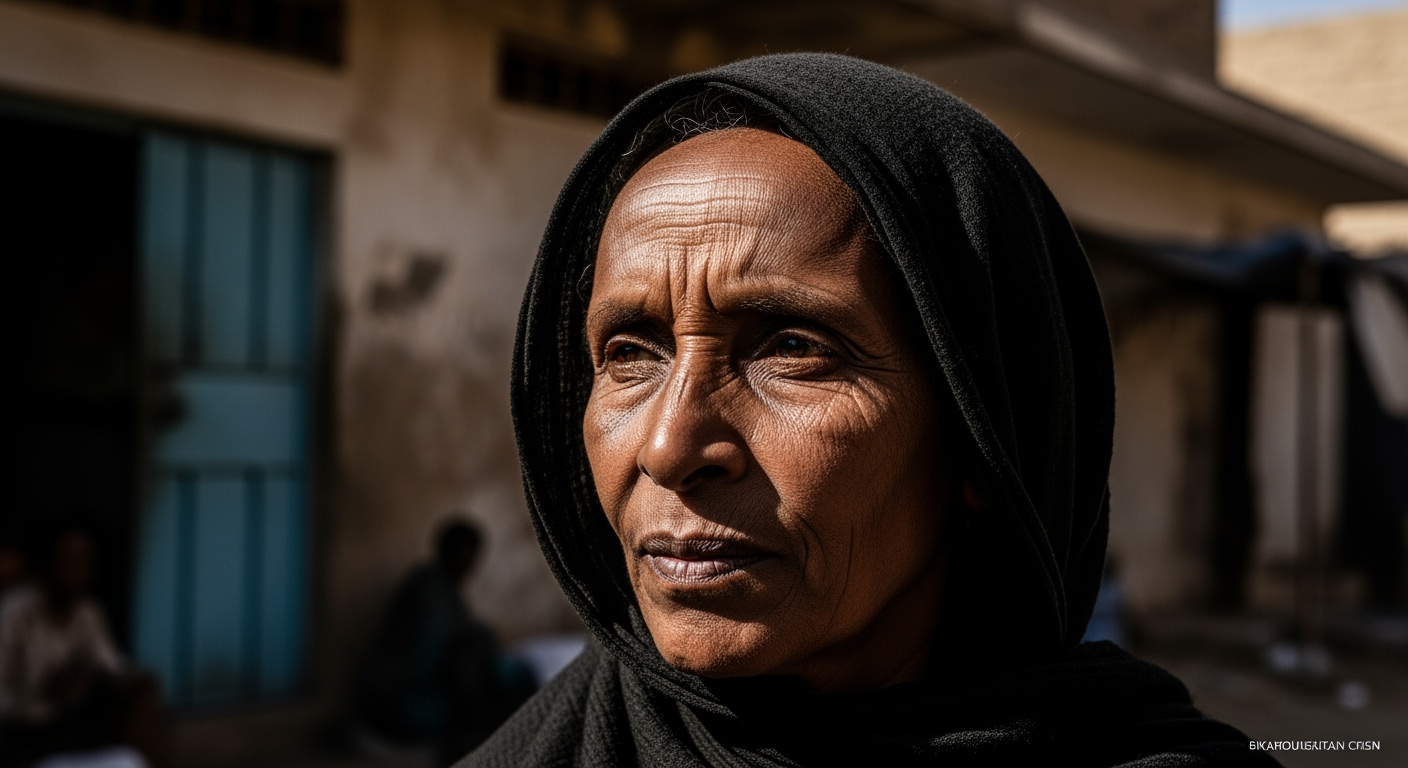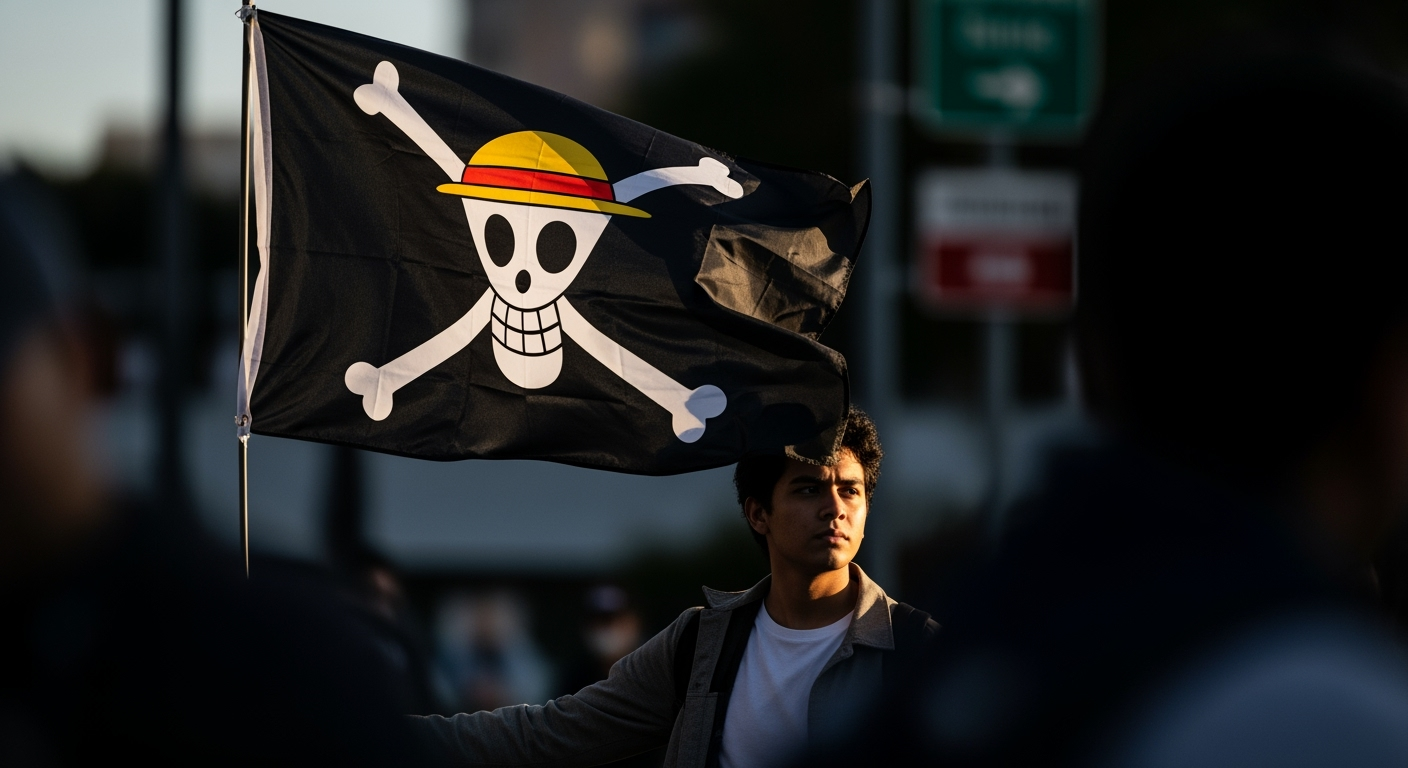Related Articles

"Khartoum" Documentary Puts a Human Face on Sudan's Unfolding Crisis

Voices from the Crucible: Israeli and Palestinian Authors Grapple with Enduring Trauma





Across continents, from the bustling streets of Jakarta to the historic squares of Paris, an unexpected banner has risen as a powerful symbol of defiance among Generation Z protestors: the pirate flag from the popular Japanese manga and anime series, One Piece. This seemingly whimsical emblem, featuring a grinning skull adorned with a straw hat, has transcended its fictional origins to become a unifying call for freedom and resistance against perceived oppression by a generation coming of age in a world rife with political and economic instability. Its widespread adoption signals a significant shift in the cultural vocabulary of dissent, leveraging shared popular culture to articulate complex sociopolitical grievances.
The One Piece phenomenon, created by Eiichiro Oda, began its manga run in 1997, coinciding with the birth year of Generation Z. The anime series followed in 1999, creating a nearly three-decade-long cultural touchstone for many young people worldwide. The narrative centers on Monkey D. Luffy, a pirate captain whose ultimate goal is to find the legendary treasure "One Piece" and become the King of the Pirates. Luffy and his diverse crew, known as the Straw Hat Pirates, are depicted consistently challenging corrupt rulers, fighting against slavery, racism, and xenophobia, and standing up to an oppressive World Government. This core ethos of fighting for freedom and justice against insurmountable odds resonates deeply with a generation navigating a global landscape marked by widespread corruption, inequality, and authoritarian overreach. The Straw Hat Jolly Roger, their iconic flag, is not merely a logo but a declaration of their unwavering commitment to these ideals.
For Gen Z protestors, the 'One Piece' flag embodies a multifaceted message. At its heart lies the pursuit of absolute freedom and the rejection of unjust authority. The flag carries a clear statement: "We do not obey authority and remain loyal to freedom and ideals." This directly mirrors Luffy's unwavering quest for autonomy and his refusal to be controlled by any overarching power. Furthermore, the concept of "chosen family" among the Straw Hat Pirates—a group of individuals from diverse backgrounds united by shared values and a common goal—provides a powerful metaphor for solidarity among protestors. They see themselves as a collective, bound by mutual support in their struggle for a better future, much like Luffy's crew.
The symbol also represents perseverance and resilience. Luffy's ability to "stretch beyond physical limits" after consuming a magical fruit has been interpreted as a metaphor for resilience in the face of adversity, a quality Gen Z activists often feel they must embody. Whether protesting government corruption, economic hardship, or limitations on digital freedom, the flag serves as a potent reminder of their collective will to resist oppressive systems and advocate for the future they believe they deserve.
The first large-scale adoption of the 'One Piece' flag in protest was seen in Indonesia in August of this year. As the government encouraged citizens to display national flags for the 80th anniversary of independence, pirate flags featuring the straw-hatted skull were raised instead across the capital and other regions. This act was a visual manifestation of the younger generation's profound distrust of the government, particularly following the passage of a military reform bill in March that significantly expanded military authority. The trend escalated when lawmakers were slated to receive a substantial housing allowance, leading to youth shouting slogans like "The people suffer, while lawmakers enjoy themselves." Authorities issued warnings and cracked down on such displays, but the movement persisted.
The flag’s message of dissent quickly traversed borders. In Madagascar, thousands of protestors demonstrating against severe water and power cuts carried the pirate flags, demanding the president's resignation. Similar scenes unfolded in Nepal, where the flag was draped on the golden gates of parliament during protests that eventually led to a change in government. In the Philippines, the symbol appeared at rallies condemning alleged government corruption and the siphoning of funds intended for flood relief projects. More recently, the flag has been spotted in demonstrations in Slovakia, Rome, New York, and Paris, signifying its emergence as a truly global emblem of youth resistance.
Experts analyze this phenomenon as a "common code in global youth protests," highlighting how Gen Z is transforming shared cultural codes—from comics and films to memes—into a distinct language of resistance. Unlike previous generations, whose protests often emphasized ideology-driven slogans, today's young activists are utilizing cultural and narrative-based symbols as new tools for political participation. Nuurrianti Jalli, from Oklahoma State University, noted that the 'One Piece' flag is "an example of how Gen Z is reshaping the cultural vocabulary of dissent."
Social media plays a pivotal role in this rapid global spread, allowing the flag's message to proliferate almost overnight and transcend geographical boundaries. This approach allows for a broader, more accessible entry point into political discourse, enabling young people to express their grievances in ways that resonate with their digital-native sensibilities. The flags and associated imagery are not just casual decorations; they are potent emblems of defiance and perseverance, bridging the gap between personal entertainment and collective political action.
The 'One Piece' pirate flag, once confined to the pages of manga and animation cells, has unexpectedly become a powerful and recognizable symbol of Gen Z's global protest movement. It embodies a generation's frustration with established power structures and their fervent desire for freedom, justice, and accountability. Its adoption underscores a significant evolution in protest culture, where shared pop culture narratives can coalesce into potent political statements, uniting diverse youth across the globe under a banner that champions ideals of chosen family, resilience, and an unwavering quest for a better world. As this generation continues to navigate complex global challenges, the Straw Hat Jolly Roger stands as a vibrant testament to their unique and evolving voice in the pursuit of change.